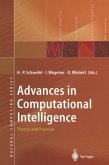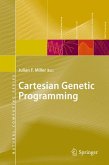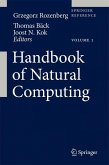Art is the Queen of all sciences communicating knowledge to all the generations of the world. Leonardo da Vinci Artistic behavior is one of the most valued qualities of the human mind. Although artistic manifestations vary from culture to culture, dedication to artistic tasks is common to all. In other words, artistic behavior is a universal trait of the human species. The current, Western de?nition of art is relatively new. However, a d- ication to artistic endeavors - such as the embellishment of tools, body - namentation, or gathering of unusual, arguably aesthetic, objects - can be traced back to the origins of humanity. That is, art is ever-present in human history and prehistory. Artandsciencesharealongandenduringrelationship.Thebest-known- ample of the explorationof this relationship is probably the work of Leonardo da Vinci. Somewhere in the 19th century art and science grew apart, but the cross-transfer of concepts between the two domains continued to exist. Currently, albeit the need for specialization, there is a growing interest in the exploration of the connections between art and science. Focusingoncomputerscience,itisinterestingtonoticethatearlypioneers of this discipline such as Ada Byron and Alan Turing showed an interest in using computational devices for art-making purposes. Oddly, in spite of this early interest and the ubiquity of art, it has received relatively little attention fromthe computersciencecommunityingeneral,and,moresurprisingly,from the arti?cial intelligence community.
From the reviews:
"A great strength of this collection is its inspirational potential. While reading it I compiled notes for five possible projects derived from (and often fusing) the techniques presented. I enjoyed reading the book, finding it both educational and thought-provoking. Anyone interested in evolved art should peruse this tome. It grants a sense of the breadth of the field and also permits readers to evaluate their personal potential and preparedness to become evolutionary artists. Serious practitioners will want this volume in their collections." (Journal of Mathematics and the Arts, Vol. 2(2), 2008, pp. 103-106)
"This book presents an overview of the state of the art in EMA as it gains maturity as a research discipline and artistic practice. ... the book is accessible to technically competent artists and musicians, but also to artificial life researchers who may have an interest in how familiar techniques can be applied in creative settings." (Alice Eldridge, Artificial Life, Vol. 15 (2), 2009)
"The book is a compilation of papers and essays by computer scientists, psychologists, practicing artists, designers, and musicians who have applied the theory and techniques of evolutionary computation to the visual arts, design, and music. The ideas, examples, and writing are of uniformly high quality." (Anthony J. Duben, ACM Computing Reviews, December, 2008)
"The editors' objective was to create a handbook for evolutionary art and music by providing extensive coverage of existing work, giving enough background information for newcomers to get started and to provide possible direction for research. ... It is intended for a wide readership, ranging from researchers to artists ... . For people already active in evolutionary art and music, or who want to start working in it, I would certainly recommend this book. It certainly deserves a place in university libraries."(Jeroen Eggermont, Genetic Programming and Evolvable Machines, Vol. 10 (1), 2009)
"A great strength of this collection is its inspirational potential. While reading it I compiled notes for five possible projects derived from (and often fusing) the techniques presented. I enjoyed reading the book, finding it both educational and thought-provoking. Anyone interested in evolved art should peruse this tome. It grants a sense of the breadth of the field and also permits readers to evaluate their personal potential and preparedness to become evolutionary artists. Serious practitioners will want this volume in their collections." (Journal of Mathematics and the Arts, Vol. 2(2), 2008, pp. 103-106)
"This book presents an overview of the state of the art in EMA as it gains maturity as a research discipline and artistic practice. ... the book is accessible to technically competent artists and musicians, but also to artificial life researchers who may have an interest in how familiar techniques can be applied in creative settings." (Alice Eldridge, Artificial Life, Vol. 15 (2), 2009)
"The book is a compilation of papers and essays by computer scientists, psychologists, practicing artists, designers, and musicians who have applied the theory and techniques of evolutionary computation to the visual arts, design, and music. The ideas, examples, and writing are of uniformly high quality." (Anthony J. Duben, ACM Computing Reviews, December, 2008)
"The editors' objective was to create a handbook for evolutionary art and music by providing extensive coverage of existing work, giving enough background information for newcomers to get started and to provide possible direction for research. ... It is intended for a wide readership, ranging from researchers to artists ... . For people already active in evolutionary art and music, or who want to start working in it, I would certainly recommend this book. It certainly deserves a place in university libraries."(Jeroen Eggermont, Genetic Programming and Evolvable Machines, Vol. 10 (1), 2009)








